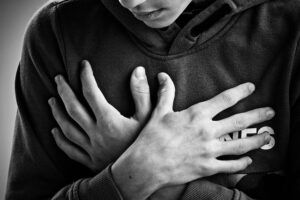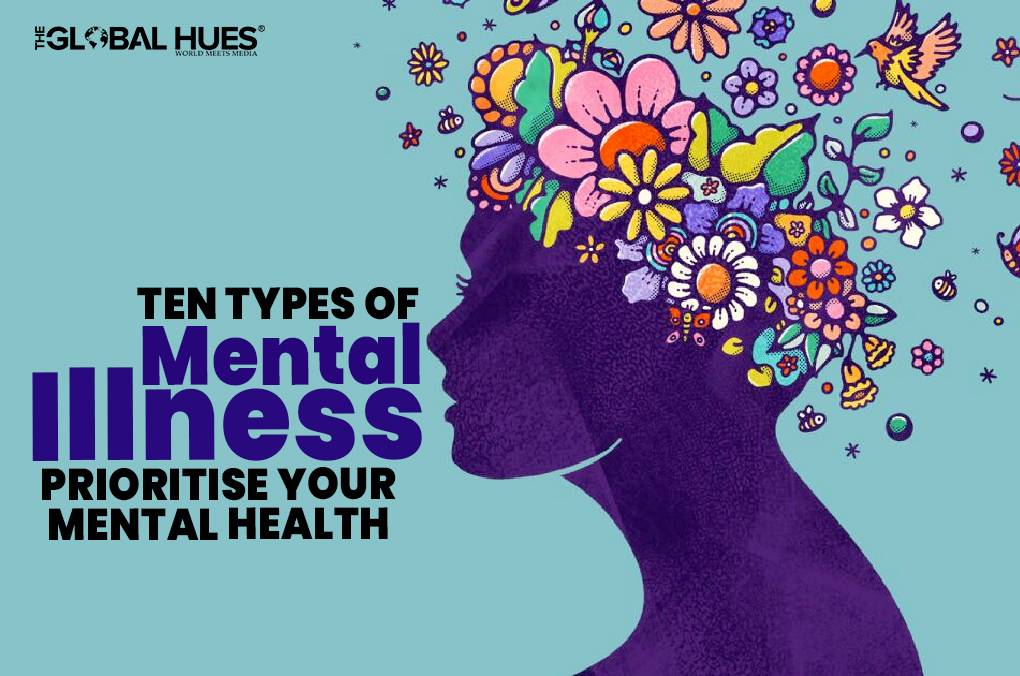According to various studies, there are nearly 56 million people in the country suffering from depression and 38 million suffering from anxiety disorders. Mental illness explores illnesses that may impact a person’s thoughts, perceptions, feelings, and behaviours. This article explores the types of mental illness that are prevalent today.
Types of Mental Illness
-
Anxiety Disorders

Anxiety disorder is a type of mental health condition that causes excessive fear, worry, and nervousness in people. A person who suffers from anxiety disorder responds to a particular situation in fear and shows signs of panic that include sweating and rapid breathing. A person only gets diagnosed with anxiety disorder if it affects and interferes with the normal functioning of life. Examples of Anxiety disorders include – generalised anxiety disorder, panic disorder, social anxiety disorder, and specific phobias.
-
Mood Disorders
A person might feel moody, sad, anxious, angry, or happy in a single day. But sometimes, when they have prolonged or persistent feelings of sadness, feeling overly cheerful or fluctuations between extreme sadness or extreme happiness, they are diagnosed with mood disorders. There are different types of mood disorders, such as depression, bipolar disorder, and cyclothymic disorder.
-
Psychotic Disorders
Movies on mental illness or disorders often show the characters having hallucinations. It is the most common symptom of Psychotic disorders. These types of disorders involve distorted awareness and thinking. People with psychotic disorder hallucinate about images or sounds that are not real or hear voices, and sometimes, they become fixated on false beliefs. Schizophrenia is an example of a psychotic disorder.
-
Eating Disorders
Today’s world focuses more on how you look, and there is always an immense pressure to look beautiful and healthy. Social media influencers can become the biggest culprit in selling notions of that perfect body, which leads people to do drastic things to remain in shape. It also leads to eating disorders that are a complex combination of disturbances created in eating behaviour, body image and self-esteem of a person. Anorexia, Bulimia, and binge eating are the most common types of eating disorders a person can face.
-
Personality Disorders
Personality encapsulates someone’s ways of thinking, feeling and behaving; they are usually different from another person. A person’s environment, experiences, and inherited traits are some of the factors that influence their personality. If, for some reason, a person’s behaviour from the expectations of the culture causes distress, then a person can be classified as having a personality disorder. This type of behaviour usually exhibits itself in late adolescence or early adulthood. Examples of personality disorders include – antisocial personality disorder, obsessive-compulsive disorder, schizoid personality disorder, and paranoid personality disorder.
-
Obsessive Compulsive Disorders
Have you come across people who like to keep everything in order? People with OCD prefer to keep everything in order and hate seeing chaos and disorder. You can characterise this disorder by an unusual preoccupation with orderliness, perfectionism, and control, so much so that it hinders their daily life. An example of this type of disorder is the fear of germs and the constant need to wash their hands, even if the thing they touched is clean.
-
Impulse Control And Addiction Disorders
People who suffer from impulse control issues are unable to resist urges, impulses, and acts that are harmful to them and others. Examples are Pyromaniacs, who like to start fires, and kleptomaniacs, who love to steal things. On the other hand, some people suffer from addiction disorders, and the most common thing a person gets addicted to is alcohol and drugs. Furthermore, people who are addicted to alcohol and drugs start to neglect their families and their work and more often than not, they end up killing people to get some extra money or become a victim of substance abuse themselves.
-
Post Traumatic Stress Disorder (PTSD)
It is the most common type of disorder faced by war veterans. PTSD is a condition that develops following a traumatic event like an assault, the death of a loved one, or a natural disaster. The symptoms of this type of disorder include- flashbacks, nightmares, and severe anxiety. People who have PTSD tend to avoid thinking or talking about the event and also avoid going to places that remind them of the incident. They tend to develop negative thoughts about themselves, have difficulty maintaining relationships, have a feeling of detachment from family and friends and feel emotionally numb. The most common form of treatment for PTSD is psychotherapy along with medication.
-
Tic Disorders
People with tic disorders make sounds or body movements that are non-purposeful, and these body movements tend to happen again and again, and they are also quick, sudden, or uncontrollable. The disorder includes movements such as eye-blinking, head-jerking, and shoulder shrugging, among others. An example of a tic disorder is Tourette syndrome, in which people have ‘tics’, sudden movements or sounds that people make repeatedly and cannot stop their body from making those sounds or movements.
-
Dissociative Identity Disorder
It is a type of mental disorder that involves experiencing a loss of connection between thoughts, memories, feelings, behaviour and identity. This type of disorder occurs as a reaction to shocking, distressing, or painful events and the need to push away those feelings. A person can suffer memory loss and create disconnected identities. The treatment for dissociative identity includes talk therapy, psychotherapy, and medicine.
Summing Up
Mental health is as important as physical health, and these are the top ten types of mental illness or disorders that can plague one’s mind.



